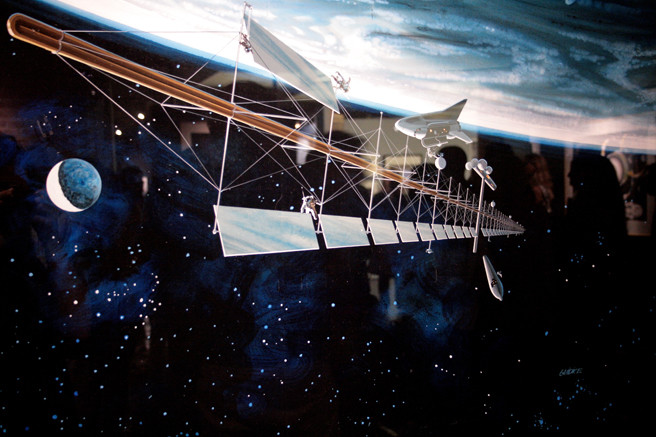With a nuclear reactor there is almost unlimited energy to mechanically push against the ring objects, so infinite delta V.
Weeeeell... yes and no. Your reactor fuel isn't infinite, for one thing. More importantly though, your ability to accelerate is likely to be heavily influenced by your choice of reaction mass. You'll want to be throwing it away from you at a few km/s, and you want to be throwing it straight so you can't trivially just punt out any old chunk of ice. Haul it inboard, melt it via your coolant loop and then blow the water out through your engine, which will probably be some sort of solid core nuclear thermal rocket, resistojet or microwave electrothermal rocket, given the sort of tech-level you're considering and given the need to be able to use water as reaction mass (which rules out other things like arcjets or ion drives).
Both kinds of engine have limited lifespans for various reasons that I shan't go into here, but do consider than infinite delta-V is basically impractical.
Would hiding behind ring material stealth be (at least short term) feasible?
Given the thickness of the ring, there's milage in dropping off some little automonous sensor drones to look above and below and report back, so you'd have to hide in the ring, and that's a mildly hazardous place to be, what with all the rocks. At low speeds (relative to the material of the ring around you), this seems like it might be practical, and certainly an interesting setting for a fight. If you see a drone, even after they've seen you, you can pop it with some suitable weapon and your opponent only knows where you were and still needs to procede either cautiously, or with force majeure (if they have it).
Or even looking like ring material to enemy radars.
Unless you had the same heat signature and same average velocity as the other bits of the ring, you'll stand out like a nuclear rocket strapped to a chunk of ice. You might manage a very sloooow, long duration sneak attack if you were lucky and clever, though.
If an enemy is behind a large object, it may be possible to attack them by creating shrapnel in nearby objects to the side of them.
Absolutely!
Moreover, other weapons that don't necessarily work well in space, like nukes, suddenly become a little more interesting. All those spare x-rays they emit will be absorbed by nearby ring material, which will probably go bang. It still won't be as dangerous as a nuke in an atmosphere, but it will present a considerable hazard.
Would launching ring material at them save on ammo?
This is a related problem to the infinite delta-V thing... you'll need to refine the lumps of ice in order to make practical projectiles. The means you use to propel them might have some other limitation, like carrying a finite number of sabots for railguns or coilguns.
Also... how would you launch the material? Docking with it, then pushing it with your main engines is obviously workable, but any point defences directed at the rock are going to hit you once the rock has broken up. Disengaging and slowing back down or redirecting yourself costs delta-V. Drones sent out to do the job will have limited delta-V. Laser ablation is deeply unsubtle and power hungry (which means lots of heat to dissipate) and can be countered in the same way. And so on.
On the flipside, if you can harvest and process ice rapidly, you can very quickly refill coolant tanks and that lets you fire your weapons harder and for longer, and heat is the number one enemy of most space weapons.
Throwing an enemy spaceship away from the ring plane will cause them to have to expend precious fuel
Most weapons you'll be using are of the "massive overkill" kind. There's a very narrow window between "no good as a space weapon" and "target reduced to partially ionised grit". Odds are good that if you can hit them, they'll be in big trouble. Falling away from the ring makes them a clear target, and it'll be much easier to finish them off.
How bad would the windows be for ionizing radiation?
It is hard to find good figures on the radiation environment around the rings. Here's a render from some recent work on radiation belts:

You may find that the rings themselves are actually fairly benign, as far as space radiation goes.
To be honest though, worrying about your windows is like worrying about your choice of sunglasses when wearing shorts and a t-shirt in the middle of the sahara. There's not much you can usefully take with you to protect yourself from most high energy cosmic radiation. Means of protecting against radiation are a bit outside the scope of this answer though!
What you might need to be more cautious about is nuke flash and laser beams, and you want something opaque between them and your eyes. Even indirect reflections and the flash of an object being zapped can blind.




